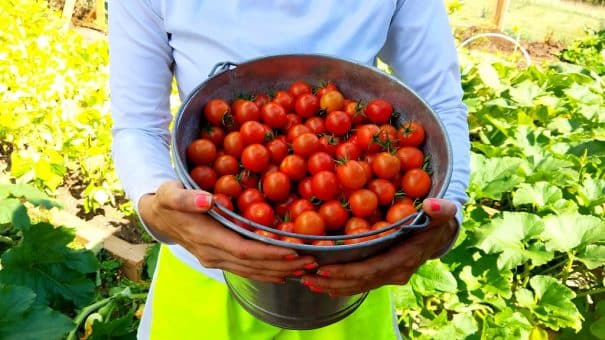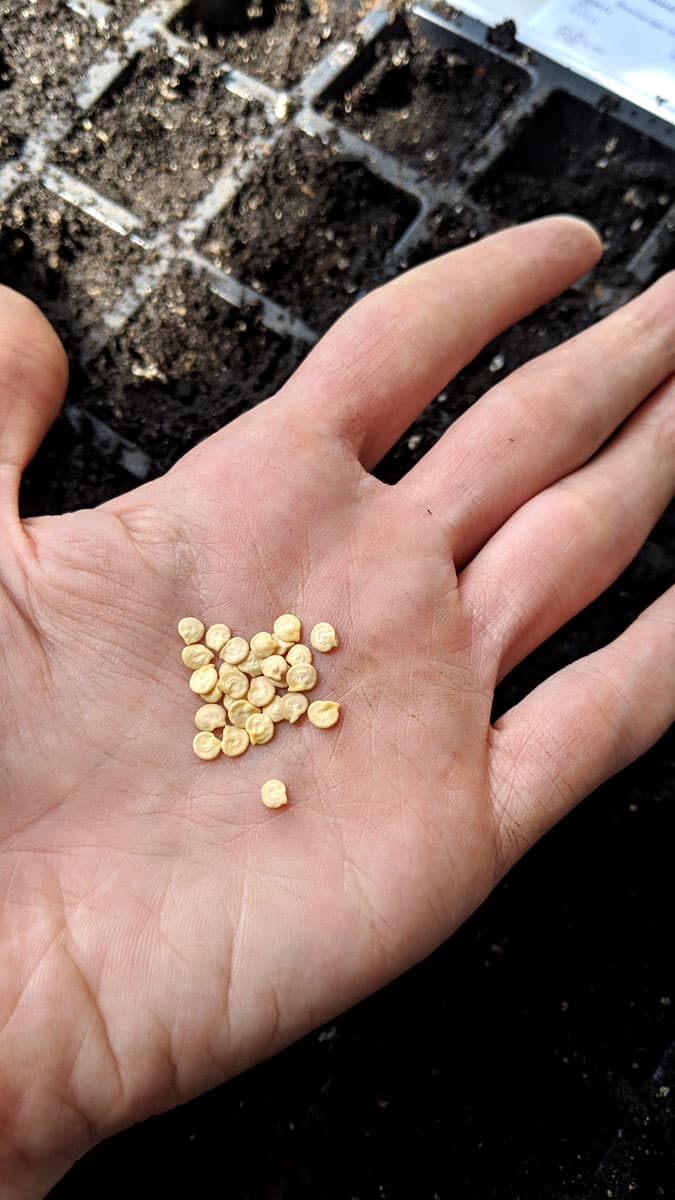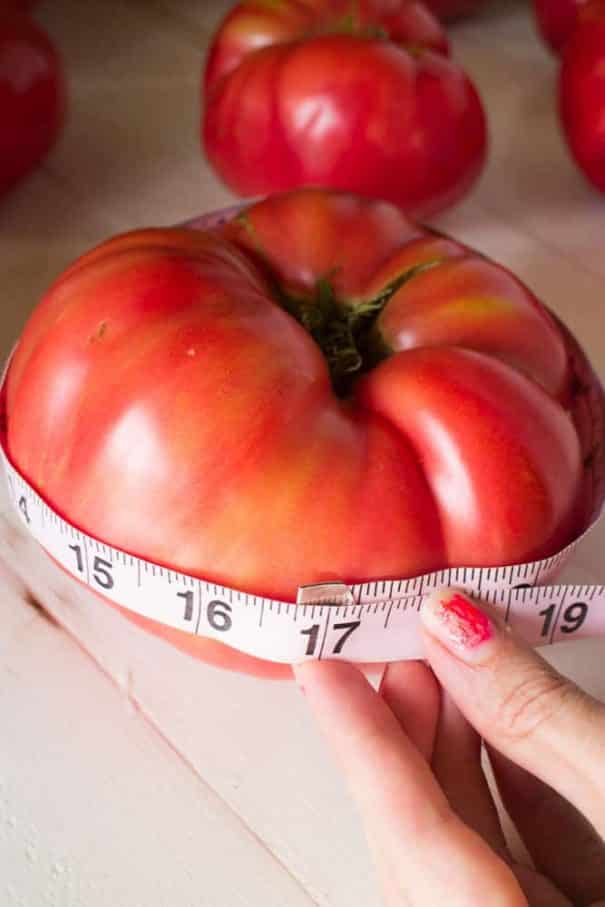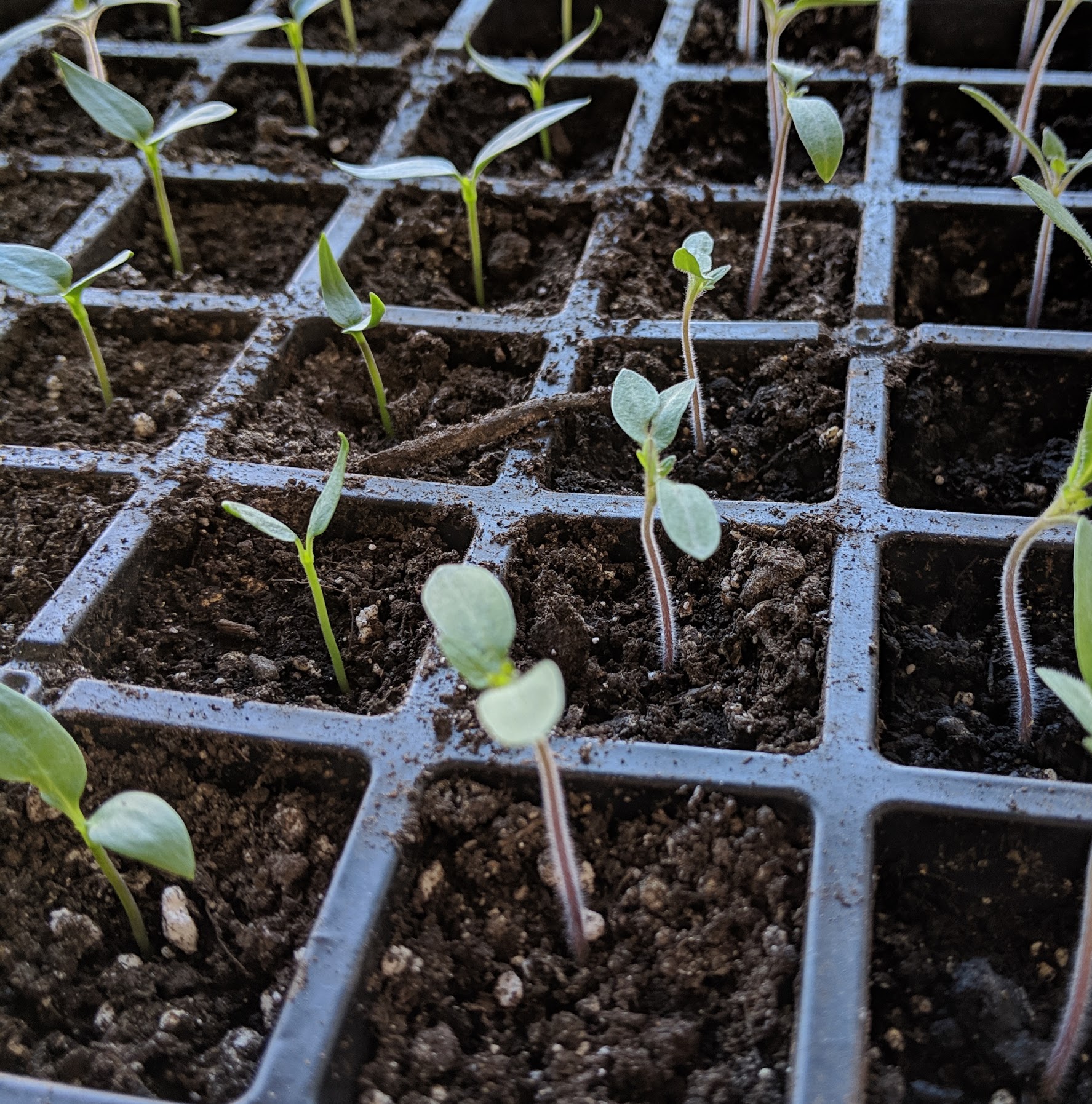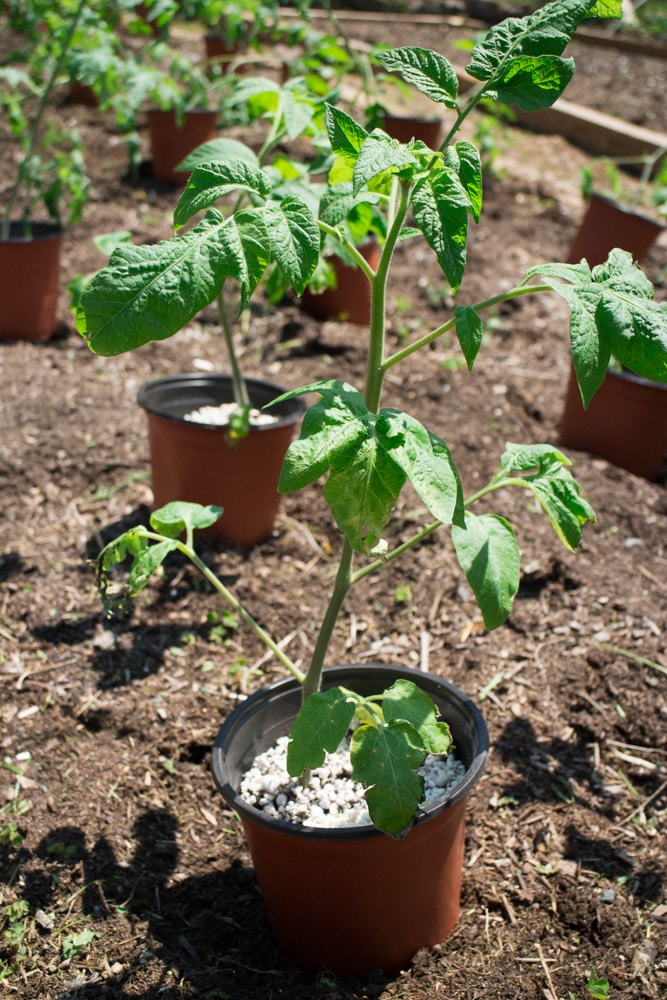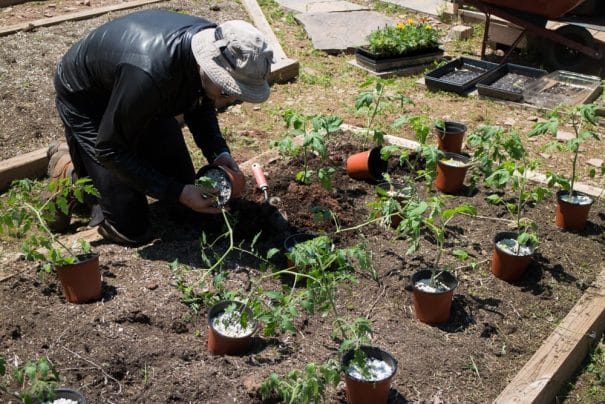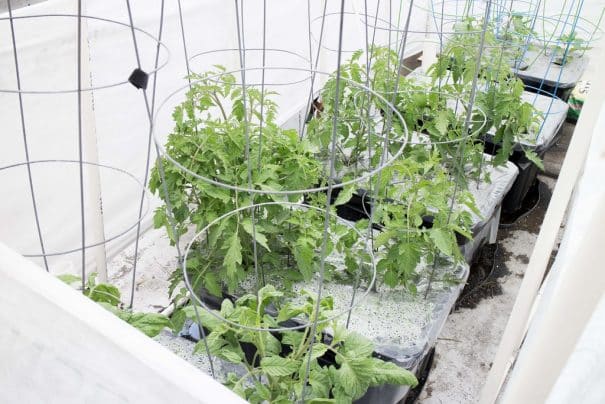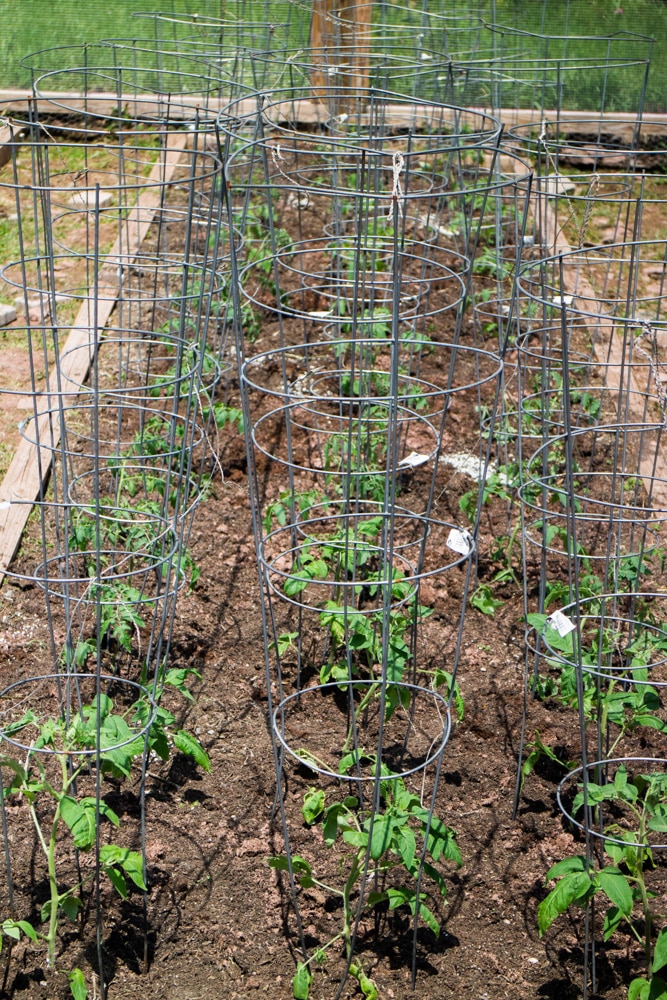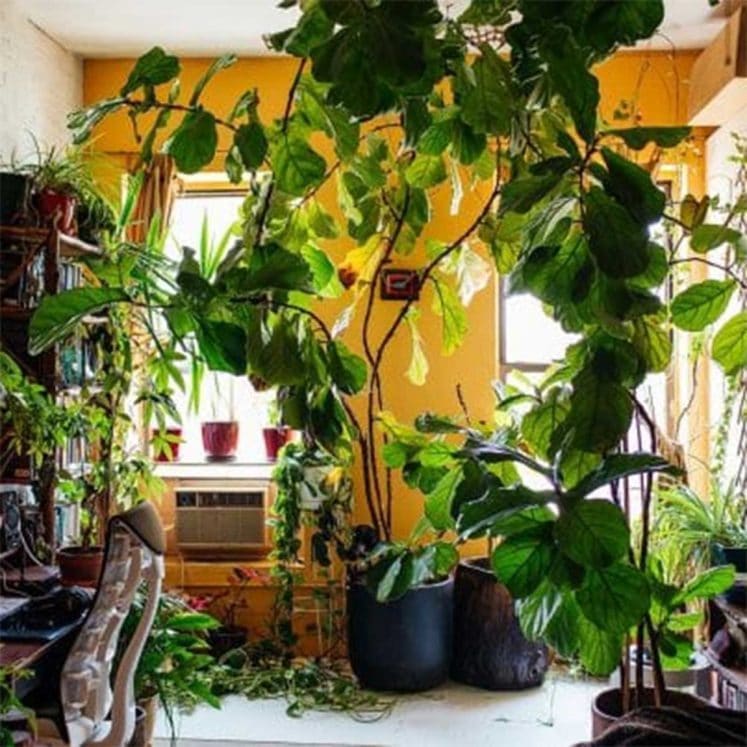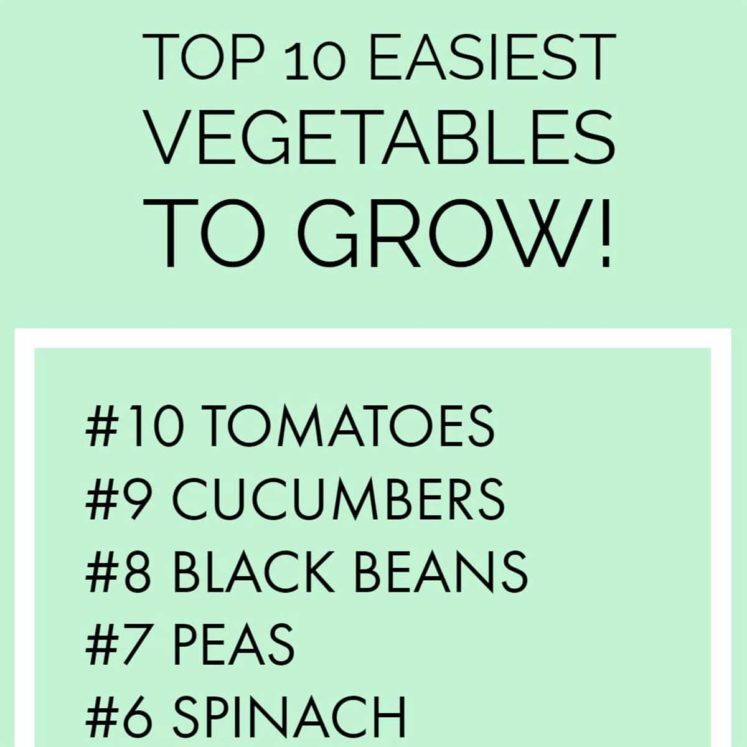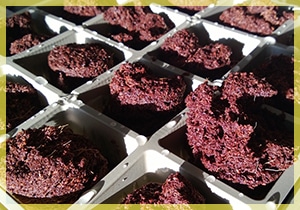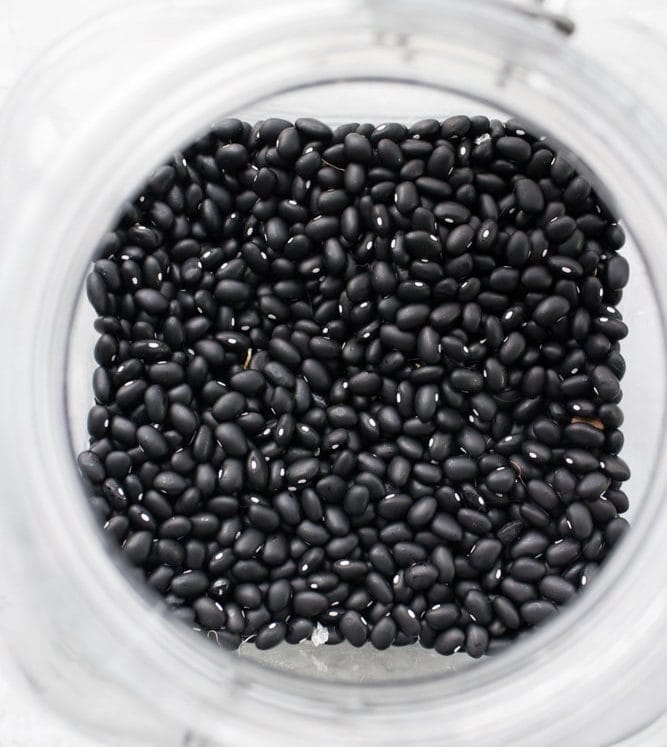How to Grow Tomatoes From Seed
Growing tomatoes from seed is one of the most rewarding experiences for a gardener. Tomatoes are easy plants to grow and produce bountiful harvests for cooking (hey tomato sauce! hey diced tomatoes! hey stewed tomatoes!), storage and snacking. Gardeners usually plant the same two or three varieties from their local garden store but growing from seed opens your garden up to thousands of new juicy possibilities.
What Do Tomato Seeds Look Like?
There are many varieties of tomatoes but two types – determinate and indeterminate. Determinate tomato plants, also known as bush tomatoes, are more compact plants (generally 3-4′ tall) that are good for smaller gardens and that set all their fruit at the same time. After the fruit on the top bud of determinate plants sets the plant stops growing and is finished.
Indeterminate tomato plants are monsters and will keep growing and producing fruit until they are killed by frost in the fall. Indeterminate tomatoes can grow to huge heights and although they usually top out at around 6′ they have been known to grow to 8, 10 and even 12 feet tall with a particularly vigorous variety and proper care.
Types of Tomato Plants
Choosing a variety of tomato plant can be a challenge. Most people only buy from the 2 or 3 varieties that are available at the local garden store but there are thousands of varieties out there. Growing the same Big Boy and Early Girl varieties can get boring year after year. The best thing about planting tomatoes from seed is trying new varieties. We use Johnny’s Seeds for all of our seeds. You can sign up on their or many other seed provider’s websites for a free seed catalog. Once you have your catalog you can page through and pick your seeds. Dream big!
Tomato Categories
Tomatoes can be categorized into three main categories:
Salad tomatoes, often known as cherry or grape tomatoes. These are the small bunching type of tomatoes that you can pop in your mouth. Slicing tomatoes are the largest of tomatoes with names like beefsteak and are typically what you imagine when they think of a tomato sliced and on a hamburger. Sauce tomatoes are medium sized and less juicy than the slicing kind and are typically grown for use in sauces and pastes. Roma tomatoes are a common variety of sauce tomato.
Our favorite varieties vary year to year but we have some perennial favorites. Our favorites from Johnny’s Seeds are usually San Marazano or Granadero paste tomatoes, Cherry Bomb or Favorita cherry snacking tomatoes and Brandywine slicing tomatoes.
Heirloom Vs Hybrid Tomatoes
There is much debate between gardeners about the best tomatoes. Obviously this is a completely subjective discussion but it is still fun to argue. There are two types of tomato seed – heirloom and hybrid. Heirloom seeds are taken from tomato plants that have been openly and naturally pollinated by the wind and insects over many generations. The seeds from the most vigorous plants are selected and taken and planted the following season and then the whole process is repeated year after year.
Heirloom tomatoes have lineages that are many decades old with some being over 100 years old. Hybrid tomatoes are purposely cross-pollinated with other varieties to produce a more productive plant. Think of it as children having inherited traits (hopefully the best) from their parents. Generally heirloom tomatoes are thought of as being more flavorful and with more niche variations to choose from. Hybrid tomatoes are what most people buy at the local garden store and have been bred for disease-resistance at the expense of flavor. Ultimately, it is personal preference.
Starting Tomato Plants Indoors
Tomato seeds are usually planted 5-8 weeks before your last frost date. There is variation between different varieties so make sure to read your seed packet for exact guidance. For Northeast growers, here’s our NYC seed calendar. Sow tomato seeds 1/4″ deep in 1″ cell flats with a soilless potting mix. Make sure to put your greenhouse dome on until germination – most seedling starter trays come with one. Tomato seeds germinate very slow and unreliably at cooler temperatures so it is best to use a heating mat to keep the temperature in a 75-90’F range until they germinate.
Tomato Growing Tips
One of the biggest problems gardeners have with starting any sort of seedlings indoors is that to plants can become very “leggy” which means skinny and unhealthy. Leggy seedlings happen from a lack of adequate light and wind. To prevent leggy seedlings use a proper grow light (here’s how to make a grow light stand) and place a fan by the seedlings to simulate wind. We’ve started skipping the fan and simply brush our hand across the seedlings back and forth a few times once a day. Gently bending the young stems like this also simulates wind and tells the plant that it should grow more bulky to withstand the wind (your hand).
After the first true leaves develop you can lower the temperature to 60-70’F and transplant them in larger flat or larger pots. We usually like more bulky plants so we transplant into 3-4″ pots that give more room for new roots to grow. Feed your plants with fish emulsion or some other complete N-P-K water-soluble fertilizer (refer to the packaging for amounts). After 7-8 weeks and with good weather on the horizon, it will be time to plant your tomato seedlings outdoors.
When to Transplant Tomato Seedlings Outside
Tomatoes are warm whether plants and will not survive or produce if planted too early in the spring. Frost will kill your plants completely. Find out frost dates for your location by typing in your zipcode here. There are variations from year to year but these dates are historically the first and last frost dates.
Tomatoes prefer to grow when the nighttime temperatures do not dip below 55’F. The plants will survive colder nights but growth will be slower until the temperatures rise later in spring. If you live in a colder zone with less growing days there are more hardy varieties of tomatoes that may help you extend your growing season. Here’s tips on covering your plants to help see them through the cooler nights of the spring and fall.
How To Plant Tomatoes
Tomatoes love to be planted deep. This goes against most gardener’s instincts but tomato plants are unique in that they will grow new roots from any buried part of the stem. These new roots will make the plant stronger and lead to higher production. Tomatoes are amazing super plants!
When planting tomatoes you can bury as much as 2/3 of the plant. Dig a hole and put the plant in with or without the buried leaves plucked off – it doesn’t matter. If you would prefer you can even dig a horizontal trench instead of a hole and lay your plant down in it. Just make sure the top few inches of your plant are above ground. Fill the hole or trench back in with garden soil and water well. Generally tomatoes prefer to be spaced 24-36″ apart from each other. Without that adequate spacing and airflow you can run into issues with diseases. However, it really depends on the variety of plant, whether it’s determinate or indeterminate and ultimately how much space you actually have. Personally, we break the spacing rule all the time and usually only have a single foot of space between plants. This is because we usually grow in small sub irrigated planters. Once you know the rules you can break them and figure out what works best for you and the space you grow in. We plant in a urban setting, so we make the most with our space!
When Should I Put Up Tomato Cages?
Tomato plants are usually supported with cages or stakes. Once they start to grow fruit the branches will become weighed down and will need support to keep them off the ground. Supports can be put on any time but it’s best to do it a month after transplanting when the plants are still small but firmly established and haven’t begun to flower yet.
I hope you found this post helpful on how to grow tomatoes from seeds! Now it’s time to go plant – have fun! Follow me on Instagram to watch our garden adventures!
More Garden Tips
How to Start Seeds Indoors How to Grow Broccoli from Seeds How to Presprout and Grow Sugar Snap Peas How to Make Garden Signs How to Protect Plants From Frost How to Use a Heat Mat for Seed Germination How to Grow Potatoes Growing Fortex Green Beans How to Grow Onions in the Winter Pin for later:
